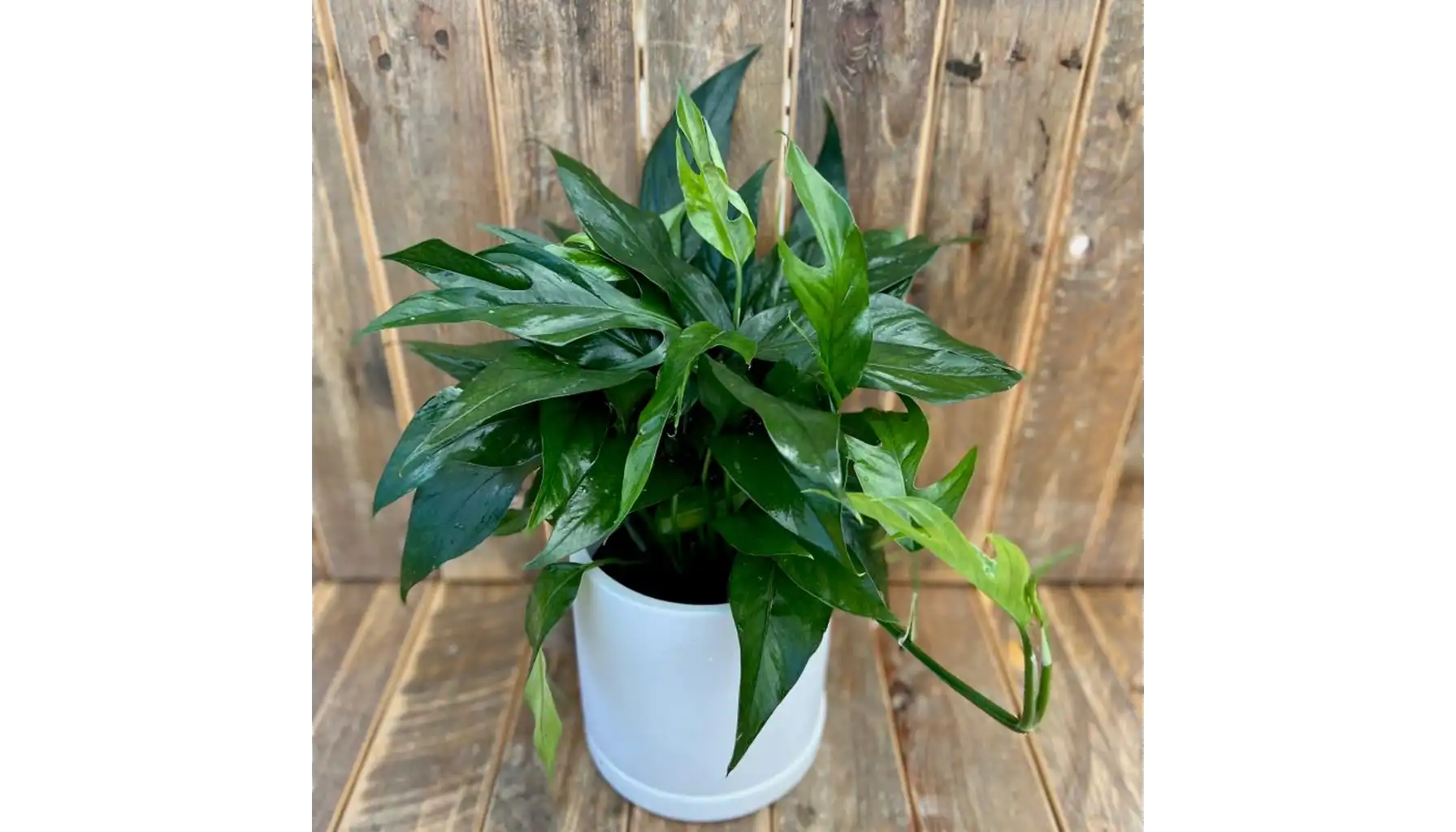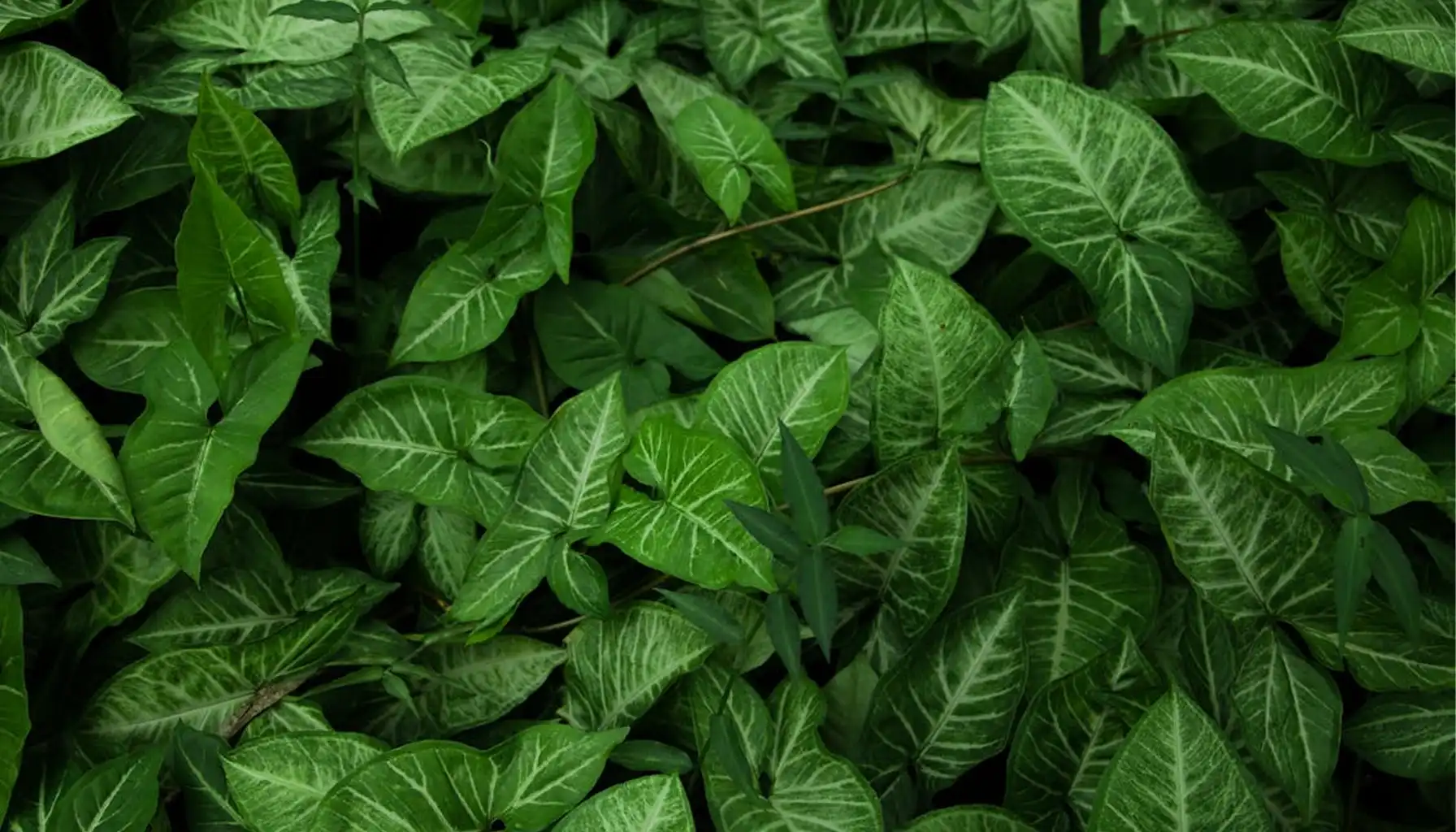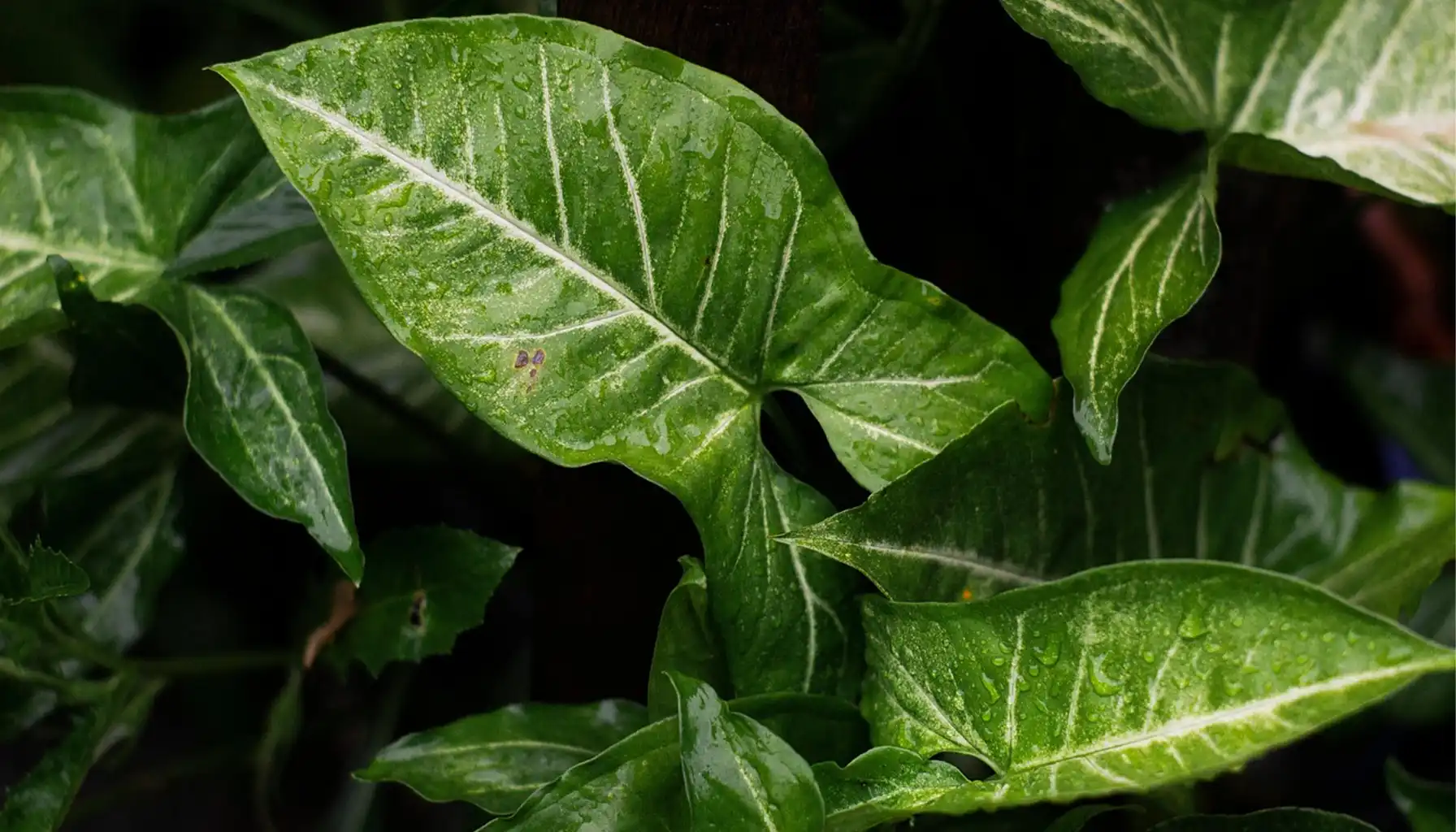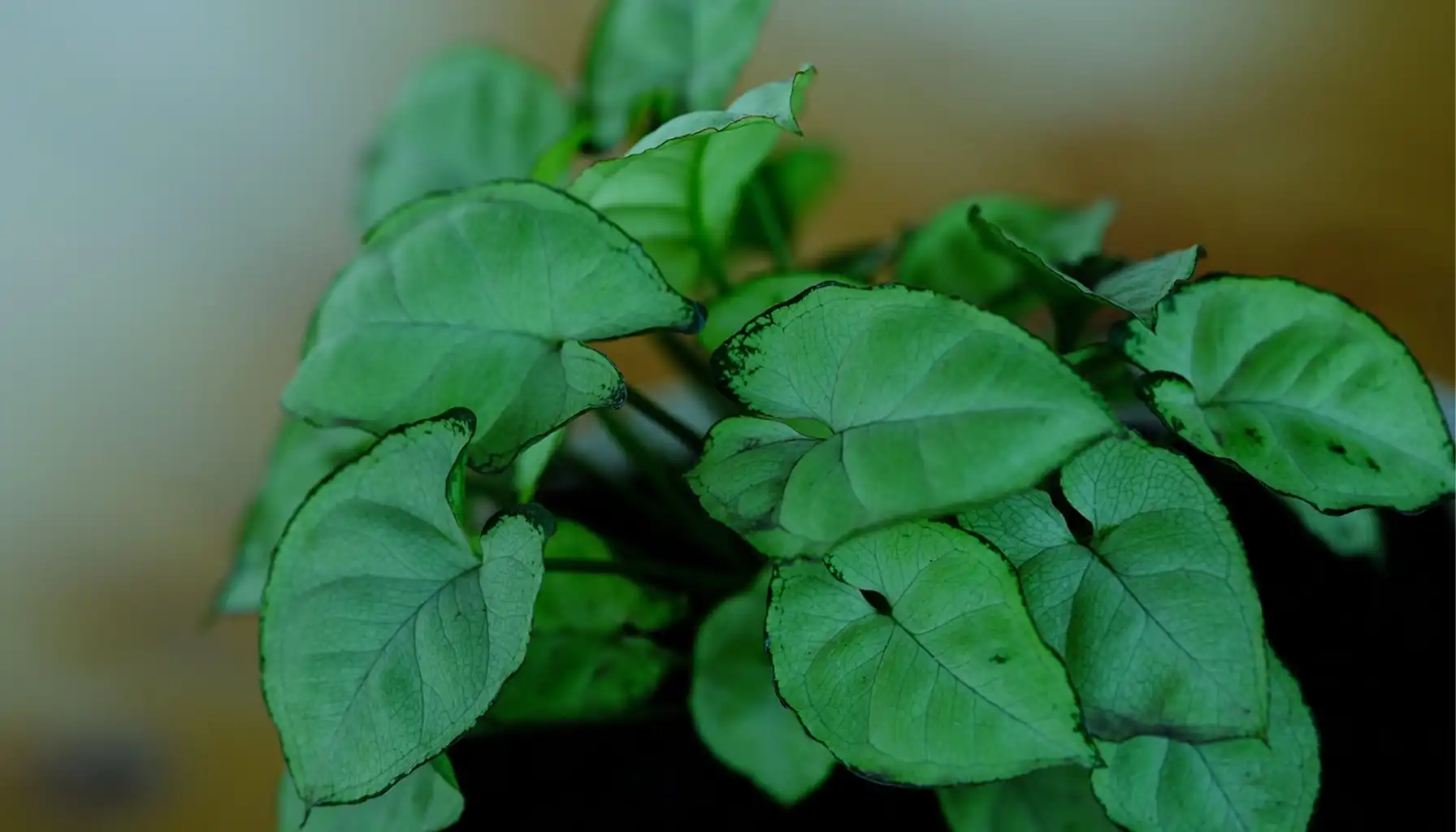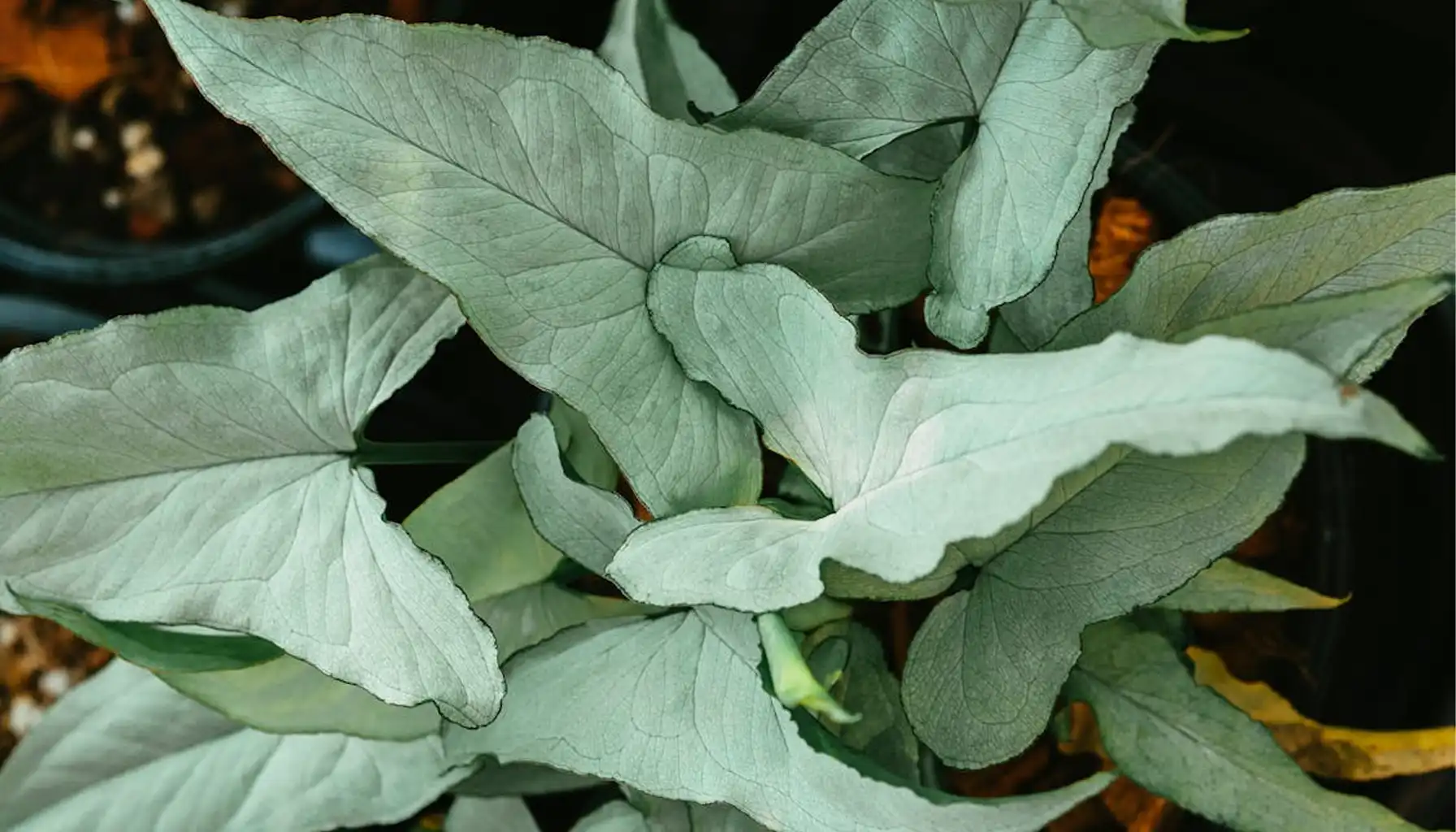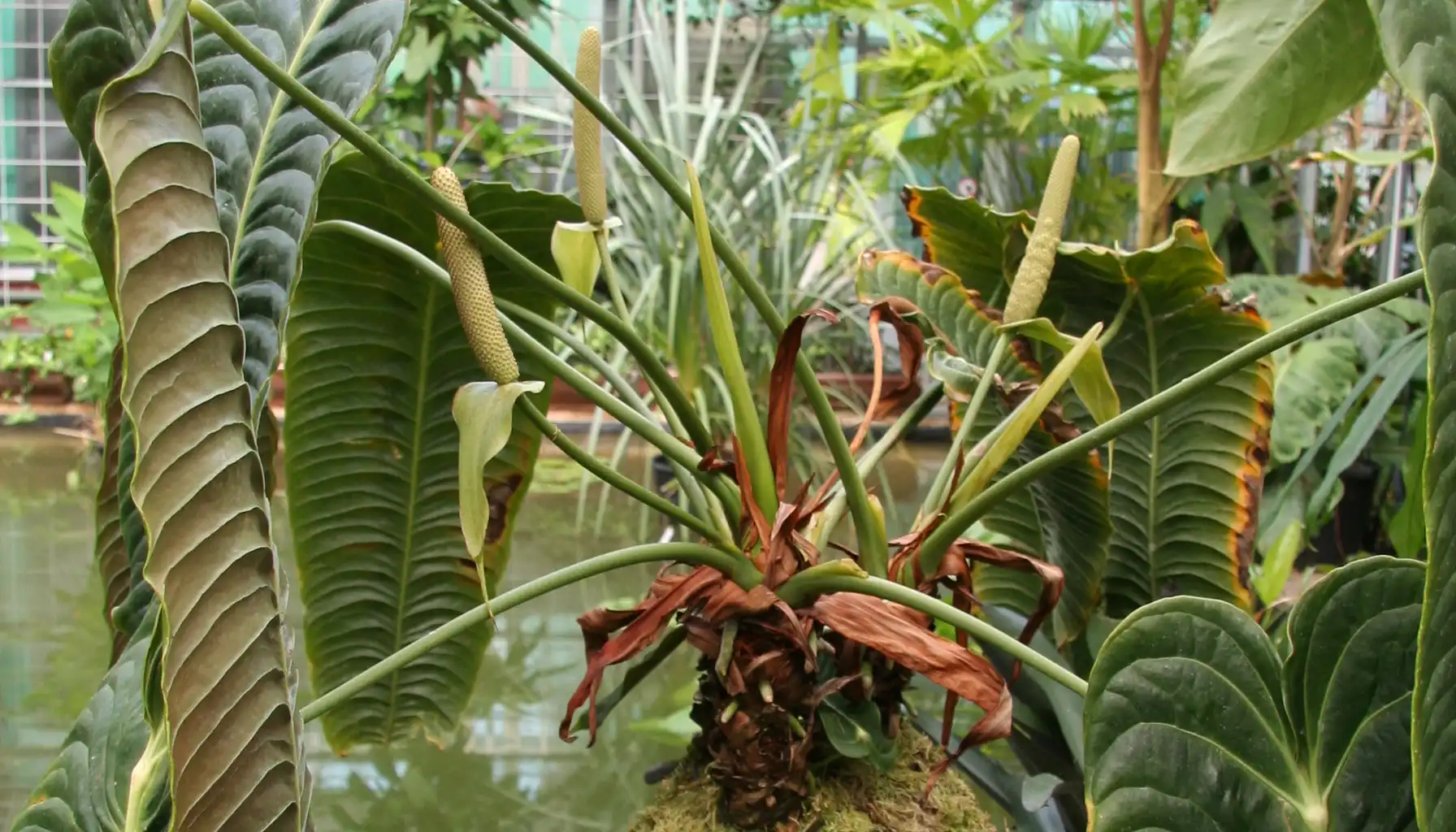Homeowners who look for something low-maintenance, stylish, and fast-growing, should definitely look at the arrowhead vine. Its ornamental leaves can add lively green shades to any room of your house and purify air at the same time.
If you don’t know where to start decorating your living space with growing greens, this might be the perfect starting point. It doesn’t ask for too much attention, but all the effort will be appreciated and quickly show you results.
All you need for a stable start with this one is a small free spot in your favorite room and a free plant identifier to manage all the care nuances.
Botanical Overview
Scientific name: Syngonium podophyllum
Family: Araceae
Native range: Central and South America, particularly tropical rainforests where it climbs trees or spreads along the forest floor
Morphology: Evergreen perennial vine with arrow- or heart-shaped leaves, often variegated. It can climb using aerial roots or trails when grown in containers.
Arrowhead plant vine generally remains compact indoors, but given support, they can grow several feet tall. Their glossy ornamental foliage and easy growth habit make them a prime choice for bringing the vibrancy of the tropics indoors.
Popular Varieties and Cultivars
One of the delights of growing Syngonium Arrowhead Vine is the variety of cultivars available, almost as huge as for Alocasia species. Each has unique coloring and growth patterns that add personality to an indoor collection.
‘White Butterfly’ – A classic cultivar with soft green leaves accented by creamy white veins.
‘Pink Allusion’ – Offers delicate pink-tinted leaves with subtle green edges, adding warmth to plant displays.
‘Neon Robusta’ – Known for bright pink foliage that glows in natural light, striking in contrast arrangements.
‘Maria Allusion’ – Green leaves with blush tones and a subtle sheen, elegant and understated.
Light sensitivity and color: The level of variegation often depends on light conditions. Brighter, indirect light enhances patterns and colors, while lower light encourages more solid green foliage. This adaptability makes variegated Arrowhead Vine a flexible choice for a range of indoor environments.
Arrowhead Vine Cultivars at a Glance
Cultivar | Leaf Color & Pattern | Growth Habit | Best Use Case |
White Butterfly | Green with creamy white veins | Upright, compact | Classic houseplant displays |
Pink Allusion | Pink tones with green edges | Bushy, spreading | Warm-toned décor, mixed planters |
Neon Robusta | Bright pink leaves | Trailing or climbing | Statement plant in bright spots |
Maria Allusion | Green with pink sheen | Upright, versatile | Subtle accent plant |
Indoor Growing Conditions
The Arrowhead Vine flower is adaptable, but to thrive and show off its best foliage, it benefits from specific conditions indoors.
Light: Bright, indirect light is ideal. Variegated cultivars show stronger colors in well-lit spots, while too little light will make leaves revert to green. Avoid harsh direct sunlight, which can scorch delicate foliage.
Temperature & Humidity: Native to the tropics, this plant prefers temperatures between 60–85°F (16–29°C). It appreciates higher humidity, though it adapts to average household levels. To boost humidity, mist regularly, place pots on pebble trays with water, or position plants in kitchens and bathrooms.
Soil: Use a peat-based potting mix or a tropical houseplant blend with good aeration. A mix of peat, perlite, and pine bark works well, keeping roots healthy and preventing compaction.
Watering: Water thoroughly when the top inch of soil feels dry. The soil should stay slightly moist, not soggy, to avoid root rot. In winter, reduce watering as the plant’s growth naturally slows.
However, if you still want to grow a climbing species at home but don’t want to put that amount of effort at the very start, you can start with something more common and totally forgiving, like Philodendrons.
Expert Tip: The AI Plant Finder app helps track optimal watering and light conditions for Arrowhead Vine (Syngonium Podophyllum). With photo-based analysis, it can even detect early stress signs, ensuring the plant gets what it needs without guesswork.
Arrowhead Vine Plant Care and Maintenance
A vine with arrowhead shaped leaves is generally low-maintenance but benefits from thoughtful care to keep it lush and healthy.
Feeding: During the active growing season (spring and summer), fertilize monthly or every two months with a balanced liquid fertilizer. Skip feeding in winter when growth slows.
Pruning: Regularly trim leggy stems to maintain compact, bushy growth. Pinch tips to encourage branching and prevent the plant from becoming too vine-like if a fuller appearance is preferred.
Support: Arrowhead Vines climb naturally. Use moss poles, trellises, or stakes if you want vertical growth, or allow stems to trail from hanging baskets for a cascading effect.
Pests & Diseases: While usually trouble-free, common pests include spider mites, scale, aphids, and mealybugs. Inspect leaves regularly and treat infestations promptly with insecticidal soap or neem oil. Overwatering may lead to root rot—ensure drainage holes are clear.
Toxicity: Syngonium podophyllum is toxic if ingested by pets or humans, causing irritation in the mouth and throat. Place it out of reach of children and pets.
How to Propagate Arrowhead Vine
Arrowhead Vine propagation is easy to complete without a huge effort, making it a rewarding plant to share with friends or expand your collection.
Stem cuttings: Select healthy stems with at least one node and cut just below it. Remove any lower leaves and place the cutting in water or directly into moist soil.
Water method: If rooting Arrowhead Vine in water, refresh it every few days to prevent stagnation. Roots usually appear within two to three weeks.
Soil method: Place cuttings into a small pot filled with a light, moist potting mix. Keep the humidity high and the temperature warm until roots are established.
Transplanting: Once the cutting develops strong roots, move it into a larger pot with a standard tropical mix.
Tips for success: Choose vigorous stems, maintain consistent warmth (70–80°F / 21–27°C), and cover cuttings with a plastic dome or bag to create a mini greenhouse effect.
Styling and Display Ideas
The versatility of Arrowhead Vine Syngonium Podophyllum makes it an excellent choice for creative indoor styling. With its climbing, trailing, or compact growth habits, it can be adapted to enhance almost any room or workspace.
Living Rooms & Lounges: Place pink Arrowhead Vine in decorative ceramic pots on shelves, mantels, or coffee tables. Compact cultivars like ‘White Butterfly’ add a light, airy touch, while trailing varieties can soften hard edges on bookshelves or entertainment units.
Bedrooms: For a calming, tropical atmosphere, use Arrowhead Vine hanging baskets above dressers or near windows. Their trailing stems create a gentle, cascading effect that enhances relaxation. Choose soft-toned cultivars like ‘Pink Allusion’ to match serene bedroom palettes.
Kitchens & Dining Areas: Arrowhead Vine care indoors gets even easier in kitchens due to naturally higher humidity. Smaller pots on windowsills bring greenery close to natural light, while climbing specimens on moss poles add drama in dining corners. Its lush foliage also complements herbs and edible plants grown indoors.
Bathrooms: Thanks to their humidity tolerance, Arrowhead Vines do well in bathrooms with bright, indirect light. Place them on countertops, floating shelves, or as part of a mixed tropical display to create a spa-like atmosphere.
Workspaces & Offices: Adding greenery to workspaces boosts focus and reduces stress. Arrowhead Vines fit neatly on desks in small pots or as trailing plants from shelves above. Compact varieties like ‘Nero’ are excellent for minimal spaces, while climbing vines provide a refreshing backdrop in larger offices.
Terrariums & Glass Displays: Young Arrowhead Vine pink makes stunning additions to terrariums. Their variable leaf shapes and colors add visual interest without overwhelming smaller setups.
Mixed Green Corners: Combine Arrowhead Vines with other tropical plants such as philodendrons, pothos, or calatheas in large planters for a lush jungle effect. The contrasting leaf shapes and colors create depth and texture, transforming corners into vibrant plant displays.
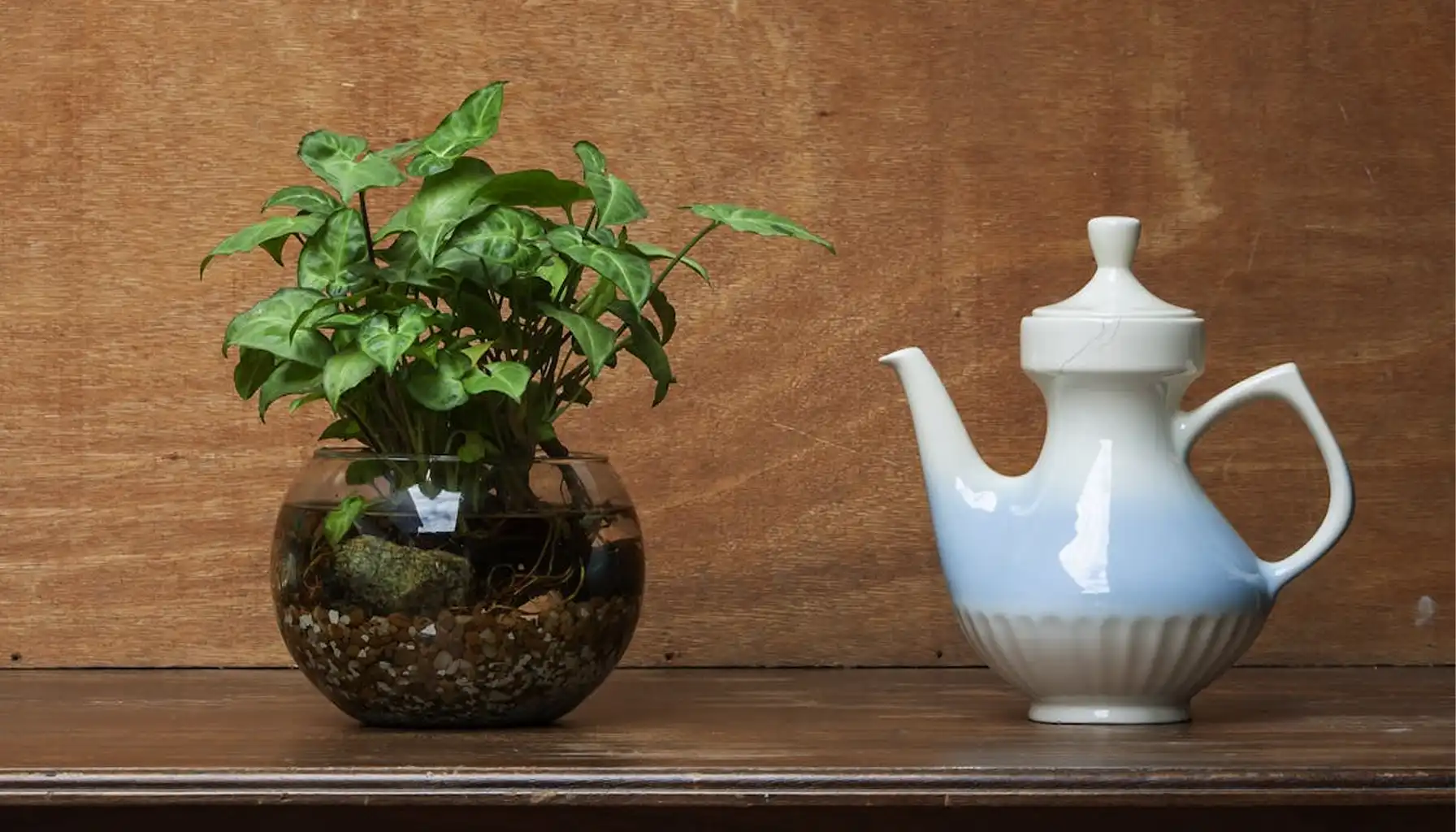
Frequently Asked Questions
Is Arrowhead Vine toxic to cats and dogs?
Yes, it is toxic to pets and humans if ingested, causing irritation.
Is Arrowhead Vine a good houseplant?
Absolutely. It’s adaptable, attractive, and easy to care for indoors.
Can Arrowhead Vines grow in water?
Yes, they root well in water and can survive there, though soil growth is healthier long-term.
Does Arrowhead Vine clean the air?
Like many tropical plants, it helps improve indoor air quality by filtering pollutants.
What is the lifespan of a Syngonium?
With proper care, Arrowhead Vine can thrive for many years, often decades.
Related AI Plant Finder Posts
